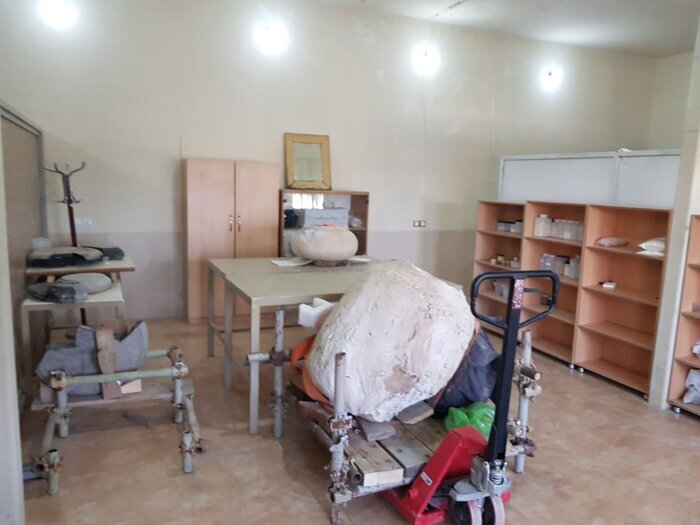Restoration laboratory inaugurated in Persepolis

TEHRAN – A restoration workshop and laboratory dedicated to ancient relics and ruins has been inaugurated on the premises of the Persepolis, the director of the World Heritage site has said.
“The chemistry section of the laboratory offers researchers facilities to test, identify, and conduct qualitative analysis on historical relics,” IRNA quoted Hamid Fadai as saying on Monday.
“It is also possible to perform mechanical tests such as density measurement, determining the percentage of porosity, and determining how much water is absorbed into rock samples in this lab,” the official explained.
Having this laboratory and several workshops on the site enhances the ability of the restorers and experts to provide more accurate restoration solutions than ever before, he mentioned.
The UNESCO-registered Persepolis, also known as Takht-e Jamshid, whose magnificent ruins rest at the foot of Kuh-e Rahmat (Mountain of Mercy), was the ceremonial capital of the Achaemenid Empire. It is situated 60 kilometers northeast of the city of Shiraz in Fars province.
The royal city of Persepolis, which ranks among the archaeological sites which have no equivalent, considering its unique architecture, urban planning, construction technology, and art, was burnt by Alexander the Great in 330 BC apparently as revenge against the Persians because it seems the Persian King Xerxes had burnt the Greek City of Athens around 150 years earlier.
The city’s immense terrace was begun about 518 BC by Darius the Great, the Achaemenid Empire’s king. On this terrace, successive kings erected a series of architecturally stunning palatial buildings, among them the massive Apadana palace and the Throne Hall (“Hundred-Column Hall”).
This 13-ha ensemble of majestic approaches, monumental stairways, throne rooms (Apadana), reception rooms, and dependencies is classified among the world’s greatest archaeological sites.
The ancient region, known as Pars (Fars), or Persis, was the heart of the Achaemenid Empire founded by Cyrus the Great and had its capital at Pasargadae. Darius I the Great moved the capital to nearby Persepolis in the late 6th or early 5th century BC. Alexander the Great defeated the Achaemenian army at Arbela in 331 and burned Persepolis apparently as revenge on the Persians because it seems the Persian King Xerxes had burnt the Greek City of Athens around 150 years earlier.
ABU/AFM
